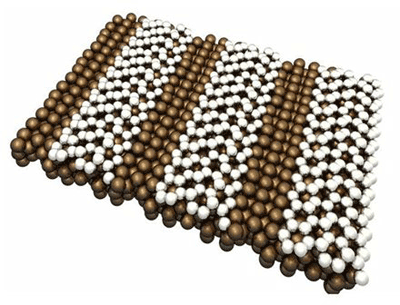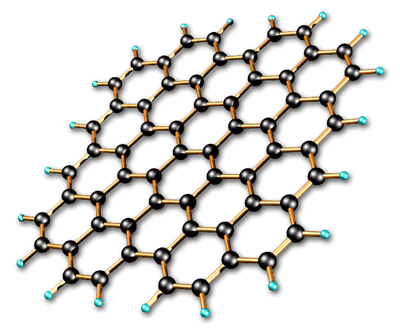Team claims silicene breakthrough; could overtake graphene as material of the future
If findings are verified, material could reshape the future of the semiconductor industry
The semiconductor industry hasn’t even given graphene its official stamp of approval yet and already there’s a competitor itching to take over its title as “Material of the Future.”
A team of European researchers published a paper in Physical Review Letters stating that they were able to synthesize silicene, an allotrope of silicon that forms 2-D single-atom sheets (as opposed to 3-D crystals).
For those in the semiconductor industry, this is HUGE news.

Silicene could replace graphene as the material of choice for all future electronic devices. (Via: itlounge.eu)
The team is made up of scientists and researchers from Technical University Berlin, Aix-Marseille University, CNR-ISM Rome, and Synchrotron Soleil in Saint Aubin, France. According to their abstract, they were able to show evidence of the creation of epitaxial silicone sheets on a silver (111) substrate.
More specifically, they condensed silicon vapor onto a silver plate to form a single layer of atoms.
Here are the details as to what this breakthrough means:
Why is this news a big deal?
Graphene, a 2-D honeycomb arrangement of carbon atoms, has already gained a tremendous amount of attention because it offers higher electron mobility than anything found in today’s silicon-based transistors. In fact, it’s widely regarded as the most conductive material on the face of the planet.

Graphene is often described as an unrolled carbon nanotube. (Via: lbl.gov)
Silicene is similar to graphene in many regards. Its biggest difference—outside of using silicon instead of carbon—is that it features a rippled, almost buckled, structure. As a result of this unique physical feature, the material’s electrons have distinct energies which allow them the ability to jump across band gaps when a voltage is applied. This unique capability, in turn, allows developers to use silicene as an on-off transistor, all the way down to the smallest scale possible.
Furthermore, silicene’s one-atom-thick structure not only presents a unique opportunity to build faster transistors and computers, it also offers the possibility of seamless, immediate incorporation; that is, due to the material’s inherent compatibility with existing fabrication processes and silicon-based electronics, it does not face difficult / costly processing (an issue holding graphene back from really taking off in today’s market).
Finding and verifying a silicene solution
Silicene has long been a much-sought-after material: academics and researchers alike were speculating about the possibility of being able to synthesize it way back in 2010. Early predictions had many looking for silicene in the form of a buckled honeycomb arrangement of silicon atoms with an electronic dispersion resembling that of relativistic Dirac fermions.
Some claimed to see structures that suggested the possibility of silicene, but this paper is the first to offer concrete evidence of the material’s actual existence at the microscopic level: The team verified their findings (and proved the industry’s early predictions about the material true) based on a unique combination of scanning tunneling microscopy and angular-resolved photoemission spectroscopy, in conjunction with calculations based on density functional theory.
They believe that the evidence provided in their paper is some of the most compelling documentation of the material ever produced.
Outlook
If the team’s claim is verified, silicene will be a major breakthrough for the electronics industry as a whole. It will likely see immediate incorporation across a wide range of electronic applications, as it will not necessitate any sort of complicated / costly processing to switch over.
The immediate next-step following the team’s publication is to grow silicene on insulators, as this would allow researchers to further examine the material’s electrical properties and decide how best to incorporate the material into future electronic devices. ■
Study available (for purchase) via: Physical Review Letters
Advertisement
Learn more about Electronic Products Magazine





